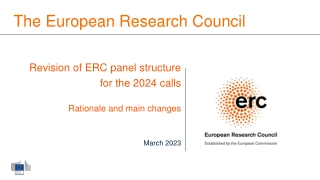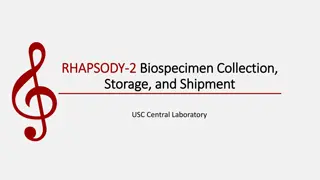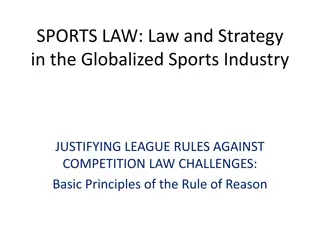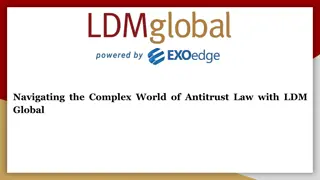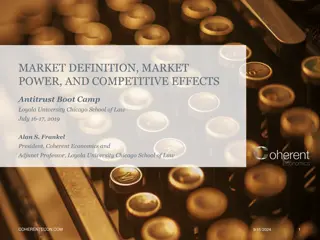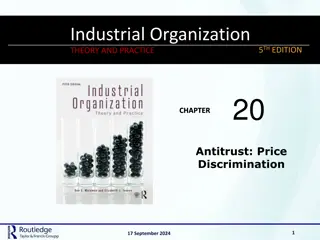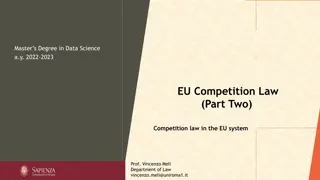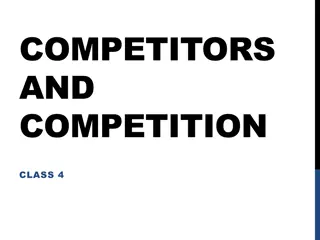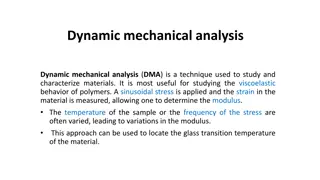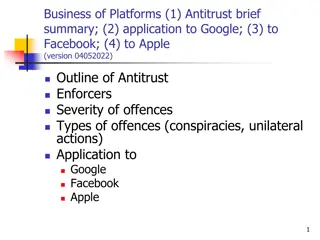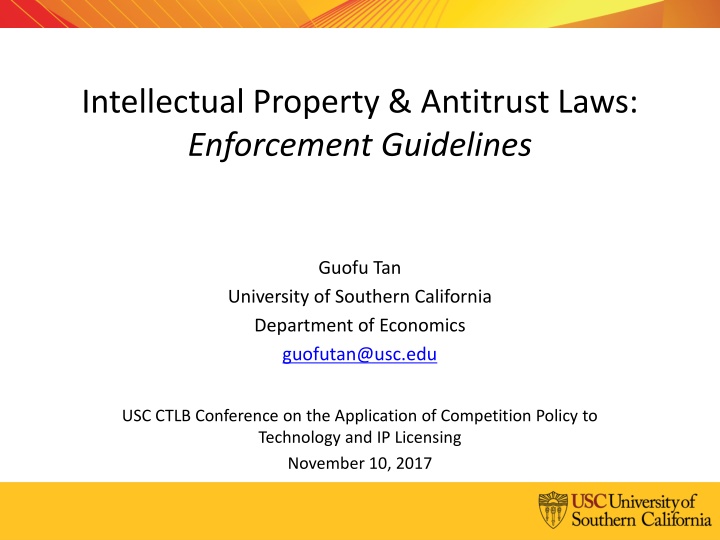
Intersection of Intellectual Property and Antitrust Laws
Explore the relationship between intellectual property and antitrust laws in promoting innovation and consumer welfare. Learn about enforcement guidelines, antitrust concerns, and principles governing IP licensing. Discover the analytical framework, monopoly agreements, abuse of dominance, and more under these laws.
Download Presentation

Please find below an Image/Link to download the presentation.
The content on the website is provided AS IS for your information and personal use only. It may not be sold, licensed, or shared on other websites without obtaining consent from the author. If you encounter any issues during the download, it is possible that the publisher has removed the file from their server.
You are allowed to download the files provided on this website for personal or commercial use, subject to the condition that they are used lawfully. All files are the property of their respective owners.
The content on the website is provided AS IS for your information and personal use only. It may not be sold, licensed, or shared on other websites without obtaining consent from the author.
E N D
Presentation Transcript
Intellectual Property & Antitrust Laws: Enforcement Guidelines Guofu Tan University of Southern California Department of Economics guofutan@usc.edu USC CTLB Conference on the Application of Competition Policy to Technology and IP Licensing November 10, 2017
Competition and intellectual property (IP) protections are complements, in encouraging innovation and enhancing consumer welfare (Spulber, 2013). IP laws provide incentives for innovation, focusing on providing inventors with a return on their innovation. A large economics literature on innovation incentives and pricing mechanisms for IP licensing Antitrust laws promote innovation and consumer welfare by prohibiting certain actions that may harm competition with respect to existing or new ways of serving consumers. IP licensing arrangements are typically welfare-enhancing and pro- competitive. Nevertheless, antitrust concerns may arise. 2
Antitrust Guidelines Antitrust Guidelines for the Licensing of Intellectual Property, issued by the U.S. Department of Justice and the Federal Trade Commission, January 12, 2017 Anti-Monopoly Guidelines on Abuse of Intellectual Property Rights, issued by the Anti-Monopoly Commission of the State Council, China (Draft for comments, March 23, 2017) ( 2017 3 23 ) Once formally published, the Chinese Guidelines shall act as the common guidelines for the NDRC, the MOFCOM and the SAIC. 3
Principles Both Guidelines recognize that the intellectual property laws and the antitrust laws share the common purpose of promoting innovation and enhancing consumer welfare. The principles of analysis require the Chinese agencies to follow the same standard of regulation as other forms of property rights within the basic legal framework of analysis under the Anti-Monopoly Law (AML); take into account the specific features of the IPRs (e.g., the scope and nature); although the IPRs are an exclusive right, an undertaking shall not be presumed to be in dominance in the relevant market merely for holding the IP rights; acknowledge the pro-competitive effects of licensing on economic efficiency and innovation in the relevant markets. 4
Coverage of the Guidelines Analytical framework Defining relevant markets A set of factors/conditions to be considered for assessing pro- & anti-competitive effects Monopoly agreements associated with IP rights Abuse of dominance in the context of IP rights including standard-essential patents (SEPs) Mergers involving IP rights 5
Defining Relevant Markets When rights to IP are marketed separately from the products in which they are used, it may be necessary to analyze the competitive effects of a licensing arrangement in a technology market. Technology markets: the IP that is licensed and its close substitutes. Both Guidelines recognize the importance of defining technology markets and possibly R&D markets, in addition to product markets. 6
Illustrating Examples The Chinese Guidelines offer a list of factors that the agencies shall consider, but do not explain or illustrate why and how each factor is relevant and important. The US Guidelines use examples (10 examples and 90 footnotes) to illustrate how the US agencies analyze some common situations. 7
Excessive Pricing The necessity and applicability of the article on excessive pricing in the Chinese Guidelines. The Guidelines do not offer any specific methodologies (or examples) in how to determine fair and reasonable royalty rates. The US Guidelines do not mention anything about FRAND or other commitments made by licensors. 8
Antitrust Safe Harbor The Chinese Guidelines distinguish IP agreements between competitors and the ones among non-competitors In order to benefit from this safe harbor, (1) the combined market share of competing undertakings in the relevant market may not exceed 20%; (2) the market share of any non-competing undertaking in the relevant market may not exceed 30%. The US Guidelines state that the Agencies will not challenge a restraint in an IP licensing arrangement if (1) the restraint is not facially anticompetitive and (2) the licensor and its licensees collectively account for no more than 20% of each relevant market significantly affected by the restraint. 9
Summary Incentives derived from IP protection and competition are the primary and complementary motivators of innovation. The policy goal is to promote an environment in which inventors have the proper incentives and rewards meanwhile consumers can benefit from innovation. Need to find the right balance between IP laws and antitrust laws. When enforcing antitrust laws, need to take into account the special features of IP. Both the US and Chinese Guidelines are quite useful, and details matter. 10


